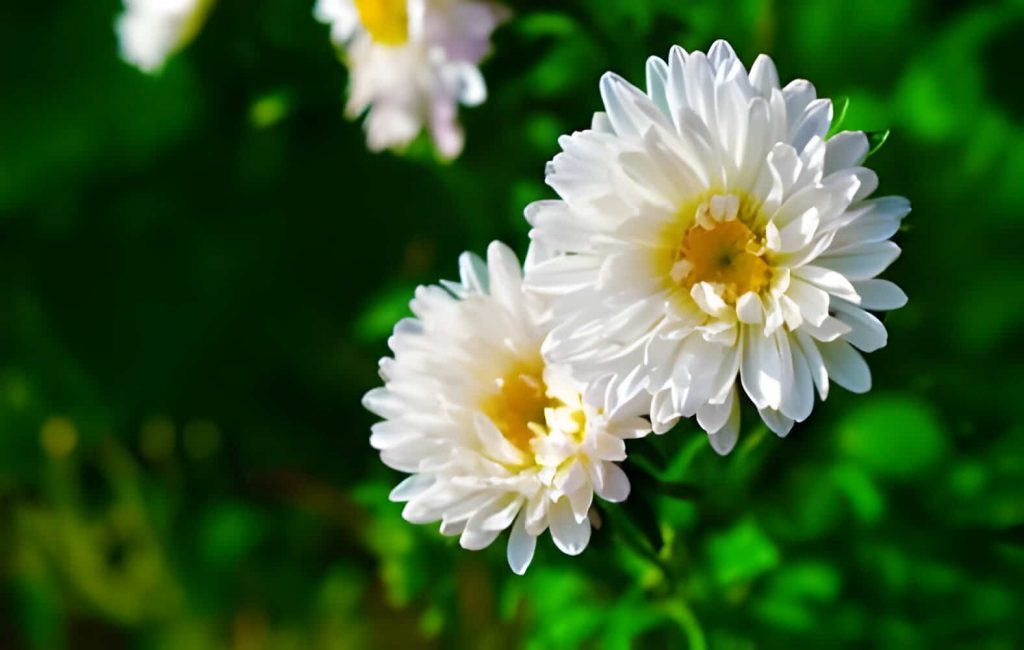
The aster flower has a meaning that extends far beyond its undeniable beauty. With star-shaped blooms in a captivating array of colors, asters have held symbolic significance for centuries. From ancient myths to modern bouquets, these cheerful flowers whisper tales of love, faith, and valor. Let’s embark on a journey to explore the depths of the aster flower meaning, uncovering the rich tapestry of emotions and stories it embodies.
Aster Flower Meaning
Aster flowers carry a variety of meanings, depending on the context. Here are some of the most common associations:
Patience: Asters symbolize the virtue of patience, perhaps due to their late-blooming nature, gracing gardens in the fall.
Faith: The aster flower represents unwavering faith and trust.
Love: Asters can convey deep and sincere emotions of love.
Valor (Valour): In some cultures, aster flowers symbolize courage and bravery.
Wisdom: The aster flower is symbol of wisdom and knowledge.
Aster Flower Color Meanings

Each color of the aster flower holds a distinct message:
Blue Aster Flowers
The tranquil blue aster flowers have a meaning beyond their hue. They represent stability and serenity, mirroring the calm of a serene sky. Their steadfastness symbolizes balance and endurance.
Purple Aster Flowers
Regal and noble, purple asters hold significance. Their rich color means loyalty, wisdom and nobility. Like a majestic robe, they adorn gardens, reminding us of our inner worth.
White Aster Flowers

Pristine and pure, white asters symbolize new beginnings, innocence and untarnished beauty. Their petals, like a blank canvas, invite us to create our own stories.
Pink Aster Flowers
Delicate and tender, pink asters convey sensitivity and affection. Their soft hues represent gentle emotions and heartfelt connections.
Red Aster Flowers
Fiery and passionate, red asters stand for undying devotion. Their vibrant petals burn with love that refuses to fade.
Mauve Asters
Mauve asters evoke nostalgia. Their muted tones symbolize memories of days gone by, like faded photographs in an old album. Also mauve asters convey a sense of calmness, peace, and tranquility.
Lilac Asters
Lilac asters mean first love or an early romantic feeling. Their delicate petals whisper sweet beginnings, like the first blush of dawn.
Aster Flower History

The name “aster” originates from the Greek word for “star.” It’s no wonder, as these blossoms resemble celestial stars with their radiating petals. Ancient Greeks believed that asters were created from stardust, connecting them to the heavens and the divine.
Throughout history, asters have been associated with love, patience, and daintiness. They were often used in wreaths and garlands during celebrations and ceremonies. In Victorian times, giving someone an aster conveyed a message of elegance and charm.
Medicinal Myths and Uses
Beyond their beauty, asters have been valued for their medicinal properties. Here are some historical uses:
- Healing Wounds: Asters were applied topically to wounds to promote healing. Their antimicrobial properties helped prevent infections.
- Digestive Aid: Infusions made from aster leaves were consumed to soothe digestive discomfort and alleviate stomach cramps.
- Fever Reduction: Aster tea was believed to reduce fever and promote overall wellness.
- Respiratory Relief: Inhaling the fragrance of aster flowers was thought to ease respiratory issues.
Modern Day Interpretations
Asters symbolize patience, elegance, and remembrance. They are often included in bouquets for special occasions. Some holistic practitioners believe that asters emit positive energy and can enhance well-being. Gardeners appreciate asters for their late-season blooms, adding color to landscapes when other flowers fade.
In conclusion, aster flowers are more than just pretty petals—they hold a rich history and offer potential health benefits. Whether you admire them for their symbolism or cultivate them in your garden, asters remain a timeless and cherished part of our floral heritage.
